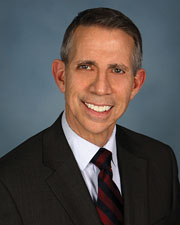The Environmental Site Assessment, not just for buyers - by Chuck Merritt

The phase one Environmental Site Assessment (ESA) has been the de-facto environmental standard providing buyers of commercial real estate with protection offered within the Comprehensive Environmental Recovery Liability Act (CERCLA) law of 1980. The assessment has been governed by the American Standard Testing Materials (ASTM) E1527 standard since 1994 of which there have been many versions over the years with the most current E-1527-21 awaiting final approval from the federal Environmental Protection Agency (EPA). These “phase one” reports are designed to alert a buyer of Recognized Environmental Conditions (REC’s) that they should be aware of as part of their due diligence while acquiring commercial real estate. However, there are other parties that also rely on a properly prepared ESA.
The lending community was the first industry to embrace the ESA as a guide to determining and managing environmental risk. Years before buyers began commissioning such reports on their own, commercial banks, credit unions, insurance companies and private lenders would rely on ESAs from their approved vendors. Although not seeking the CERCLA protection at the time of a loan origination, the ESA gives the lender an insight of the property from an environmental perspective. For example, many of today’s apartment buildings and corner retail establishments were formerly gas stations storing gasoline, diesel fuel and motor oil in underground storage tanks (UST’s). Determining if these tanks had leaked the petro-chemicals into the soil, groundwater or caused a vapor intrusion (VI) issues became a concern for lenders as remediation costs in some instances could outweigh the value of the real estate.
Sellers have also ordered these reports on properties they are marketing and have engaged consulting firms to perform an ESA on their behalf. The goal is to better understand what environmental concerns may be present in which the seller may decide to address in advance of putting the property on the market. Commercial properties connected to on-site sanitary systems such as cesspools and septic tanks is an example of a potential area of concern depending on the past tenants and site operations.
Conducting sampling and potentially remediating these structures can save time when trying to sell a property and demonstrates the benefit of the seller ordering an ESA. Phase one reports addressed to an owner of a property should not be re-addressed to a potential buyer to use as their due diligence. There can be nuances as to what a seller wants to know and what a buyer or their lender may want to know about a property; both reports can be ASTM compliant. The standard also has a section known as a Business Environmental Recognized Condition (BREC). A BREC may very well have a cost to address an issue, but that issue may not rise to the level of regulatory notification and potential inclusion on a regulatory listing or database. Buyers would be more likely than sellers to key in on a BREC issue.
Regulatory agencies may also require a phase one and such is the case with the New York City Office of Environmental Remediation (NYCOER) which manages the E-program in which hundreds of sites in the five (5) boroughs have been flagged with this designation. It presumes a site may be contaminated based on historical information the city has. So, a buyer can look at a property such as a vacant dry cleaner that used the solvent perchloroethylene (PERC) as a redevelopment opportunity and may decide to skip the phase one and earmark that money for phase two (2) testing. This may include sampling soil, groundwater, or the air beneath and within a structure for the accumulation of vapors. However, when approaching OER to address the noted concerns and ultimately achieve a “Notice of Satisfaction” they will require the applicant to submit an ASTM compliant environmental assessment.
Lately, with companies looking at their Environmental Social Governance (ESG) goals, a phase one ESA on their commercial real estate may be prudent. Although not a buyer and not seeking CERCLA protection, the report can point to environmental issues within a company’s real estate holdings. The storage, handling, and disposal of hazardous chemicals used at a particular plant or warehouse building may very well be an issue outlined in the ESA findings.
The goal of a phase one ESA has always been to provide the best information for a client who is making a decision about commercial real estate. A buyer will always benefit the most by understating potential environmental issues during an acquisition, but the report can also benefit other entities determining if any environmental issues may be associated with a particular piece of real estate. The new ASTM E-1527-21 standard will help bolster that objective.
Chuck Merritt, LEED AP, is the president of Merritt Environmental Consulting Corp., Hauppauge, N.Y.
Suffolk County IDA supports expansion of A&Z Pharmaceuticals


The evolving relationship of environmental consultants and the lending community - by Chuck Merritt
When Environmental Site Assessments (ESA) were first part of commercial real estate risk management, it was the lenders driving this requirement. When a borrower wanted a loan on a property, banks would utilize a list of “Approved Consultants” to order the report on both refinances and purchases.









.jpg)